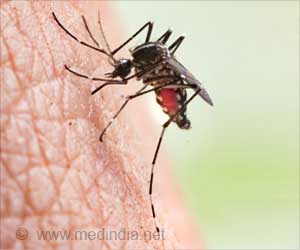Australia will face an inevitable temperature rise, whilst suffering further decreases in rainfall and an increase in extreme weather events, latest projections show.
Australia is known to be one of the foremost victims of the ongoing process of global warming.
The latest projections for the region point to the inevitability of temperature rise accompanied by rainfall decline and also an increase in extreme weather events.The sorry part of the story is that even if global greenhouse gas emissions are reduced in the foreseeable future Australia will still see temperature rise by about one degree Celsius by 2030 and rainfall decline by up to five per cent.
So much irreversible damage has already been done and all that Australia could do now is to begin to adapt itself to the inevitable, said a mournful Dr Penny Whetton, a co-author of the report prepared jointly by the Bureau of Meteorology (BoM) and Commonwealth Scientific and Industrial Research Organisation (CSIRO).
The report Climate Change in Australia was presented Tuesday in Sydney at GREENHOUSE 2007, an international conference focusing on projections for the future.
The four-day conference will fear industry and government representatives outline their approaches to tackling climate change.
Approximately 50 of the world's leading climate researchers are attending the conference organised by the World Climate Research Programme, the International Geosphere–Biosphere Program and the Global Climate Observing System.
Advertisement
Depending on how quickly and effectively greenhouse gas emissions were reduced the temperature could increase 5 degrees Celsius by 2070 and there could be a 30 per cent reduction in annual rainfall, said Dr.Penny Whetton of the CSIRO.
Advertisement
A US study recently reported disease outbreaks on the Great Barrier Reef, the world's largest coral reef system, located in the Coral Sea, off the coast of Queensland in northeast Australia, Scientists tracked an infection called white syndrome on the Great Barrier Reef.
Coral colonies live atop limestone scaffolding, which is built from the secretions of the coral creatures called polyps. The vivid colors of the coral come from the symbiotic algae that live in the polyps and supply them with much of their nutrients.
When disease or stressful environmental conditions, such as changes in ocean temperature, strike the reef, the polyps expel their algae, making them appear pale. Corals are critical to the survival of some commercial marine species and help buffer low-lying coastal areas.
"More diseases are infecting more coral species every year, leading to the global loss of reef-building corals and the decline of other important species dependent on the reefs," the study had said. The Green House 2007 report tends to confirm such apprehensions.
According to the BoM and CSIRO, the best case scenario (in the presence of low greenhouse gas emissions) is an increase of between 1 and 2 degrees Celsius by 2070, with a 20 per cent decrease in rainfall.
The report states that Australia's temperature has climbed 0.9 degrees Celsius since 1950 and there has been an increase in hot nights and drought.
Another of the report's authors, BoM's Dr Scott Power, said that the oceans surrounding Australia had warmed and the sea levels had risen.
The report blames these effects of climate change on greenhouse gas emissions produced by humans.
"The message is that global warming is real, humans are very likely to be causing it and that it is very likely that there will be changes in the global climate system in the centuries to come larger than those seen in the recent past," states the report.
The report is based on conclusions of the Fourth Assessment Report of the Intergovernmental Panel on Climate Change (IPCC) released earlier this year, however it incorporates additional sophisticated models and is specific to the Australian climate.
Climate change in Australia will be an important tool to help government, business and communities plan ahead, said CSIRO.
Australia needed not only to reduce its greenhouse gas emissions but also to adapt to the inevitable effects of climate change, according to Dr Power.
The report also shows that by 2070 there will be many more days that reach over 35 degrees Celsius and up to 80 per cent more months of drought. Fires may increase, there will be less frost and sea levels will continue to rise in the coming decades.
Source-Medindia
GPL/C






